When adding individual air cleaners, the dilemma of what to do about crank case ventilation is always a question. Some dump the gases outside the engine compartment to the street, others just buy a small K&N-type filter and put it on the end of the tube that was intended to go into the bottom of original air filter housing (as shown in the photo on the top right - click it to see a larger view). Still others go to a lot of expense to make the system work as originally intended yet have a spectacular show-quality presentation, as Herb Berkman did on the Yenko Stinger (YS-317) he built many years ago (the photo on the bottom right).
Here's another way that results in a PCV system that works properly, looks presentable, yet doesn't cost a lot of money.
click on pictures to enlarge
At Home Depot or Lowes (or any hardware store worth its salt), these 2" sewer line pipe connectors can be found. They cost between $3 and $4 each. At least two will be needed, but I picked up four so that all the air cleaners would be the same height on the Corsa engine. Four feet of 5/8" PCV hose and 2 feet of 3/8" fuel line were used to complete the project.
These 5/8" nylon barbed fittings were found at the local hardware store.......
I used a Dremel tool with a cut-off disk and a grinding wheel to cut and finish the holes that are needed.
With the rubber removed from the pipe connector, mark a circle a little smaller than the nylon fitting. With the cut-off wheel in your Dremel, make a crude hole on the connector as shown here. NOTE: Be sure to mount the connector on each carburetor before you cut the holes to mark them in the orientation that will work best for your set up. The tightening screws on the clamps need to end up in a location that will not interfere with throttle or choke linkages.
With the rubber insert in place, mount the connector back on the carburetor with everything oriented properly, then mark the hole on the rubber with a Sharpie or pen. With the rubber removed, cut a hole SMALLER than the nylon fitting. The interference fit between the rubber and the fitting is what holds it in place.
Put the rubber back into the connector and insert the fitting as shown in this photo.
Put the air filter into the connector and then place everything on the carburetor, tighten the clamps and hook up the 5/8" hose.
Here's a view of the passenger's side of the engine. The 5/8" hose runs from one side of the engine to the other with the 5/8" nylon Tee connecting the PCV tube and orifice A new 3/8" fuel line was run from the PCV orifice to the crossover/balance tube.
Completed system
Fellow Corvair enthusiast, Chandler Bishop was my inspiration for doing the PCV system using this method. He installed the system on his 110 engine in a slightly different way.
On a 110 PCV tube, the orifice fitting is much further up on the tube and makes it very difficult, if not impossible, to route the hoses. Chandler removed the orifice fitting from its original location and relocated it a place closer the engine. He then cut the tube to length.
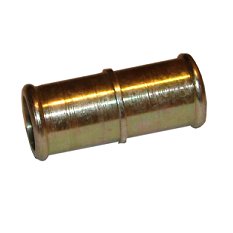
On his first go-round, Chandler used 3/8" fittings and hose instead of the 5/8", only to discover that the smaller hose diameter doesn't accommodate the necessary flow required.
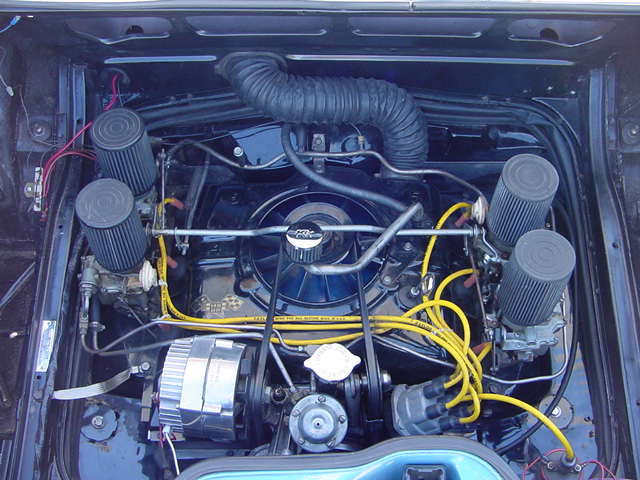
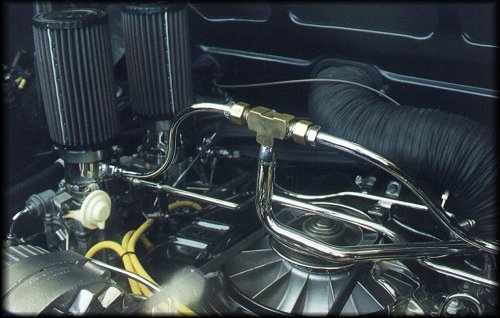
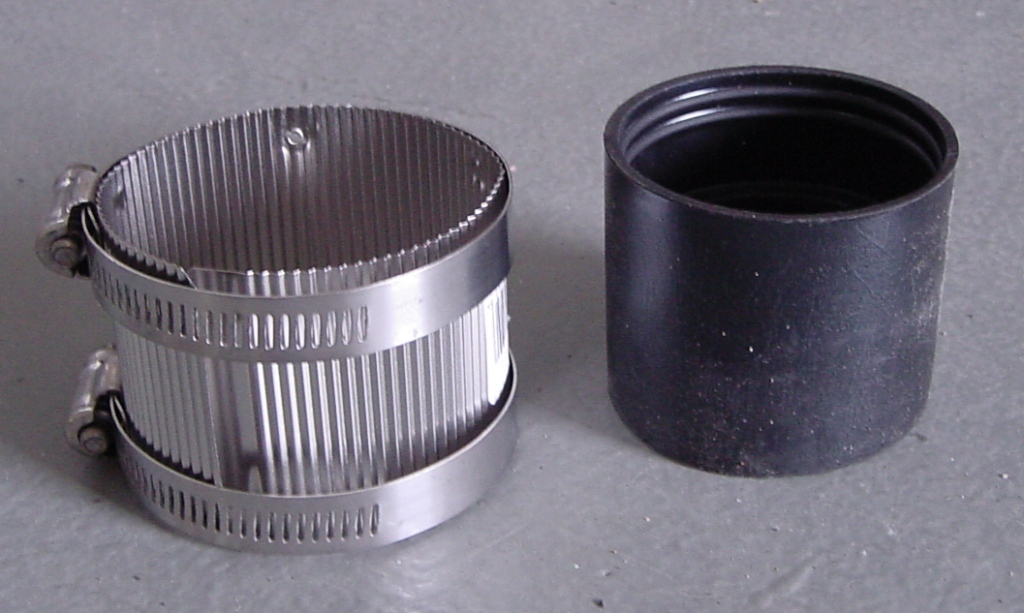
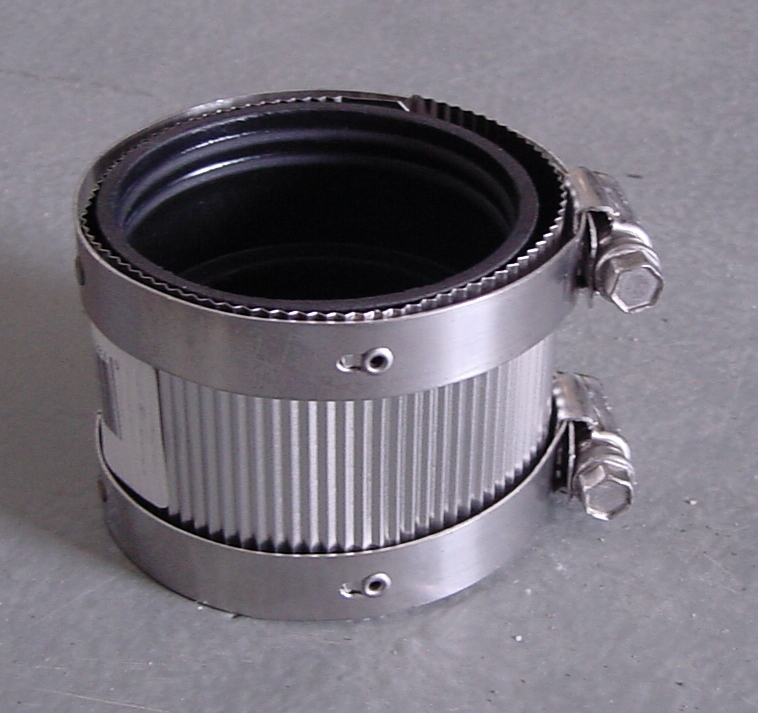
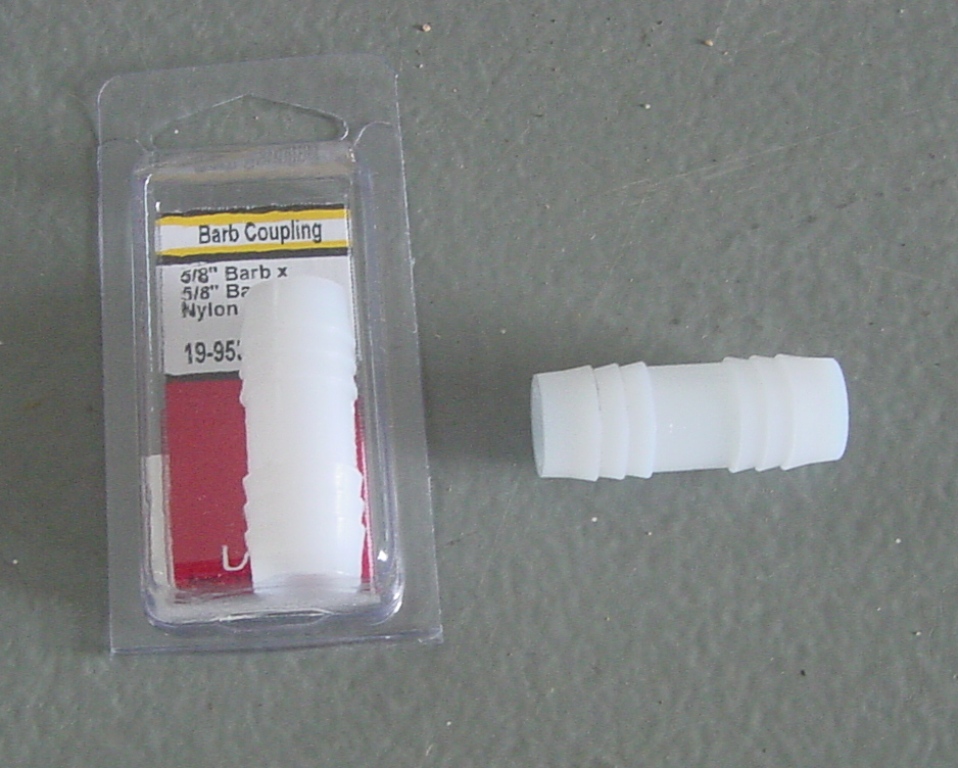
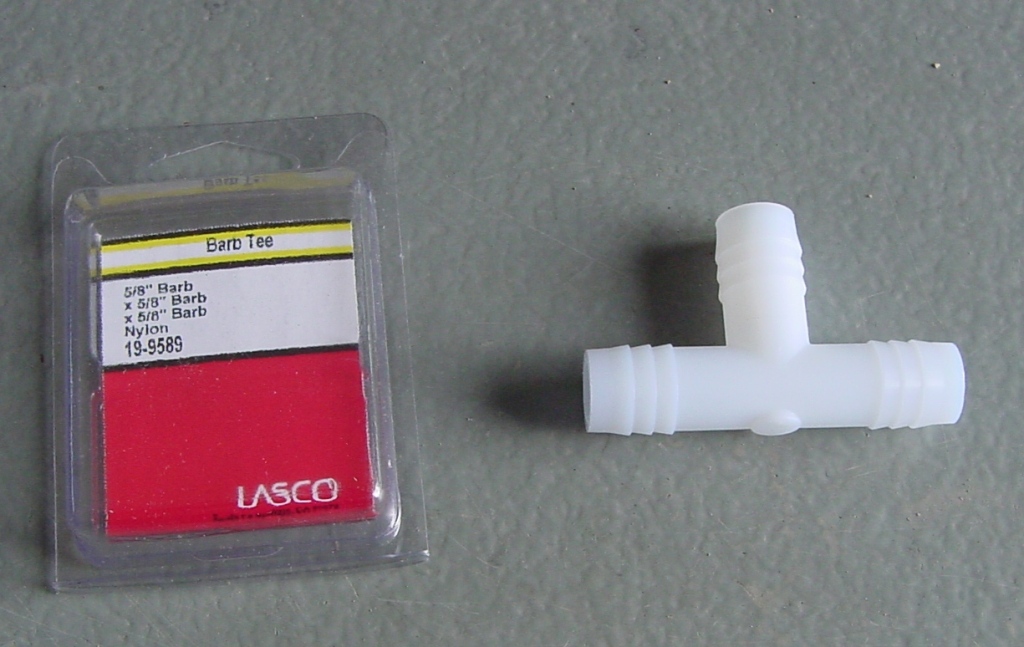
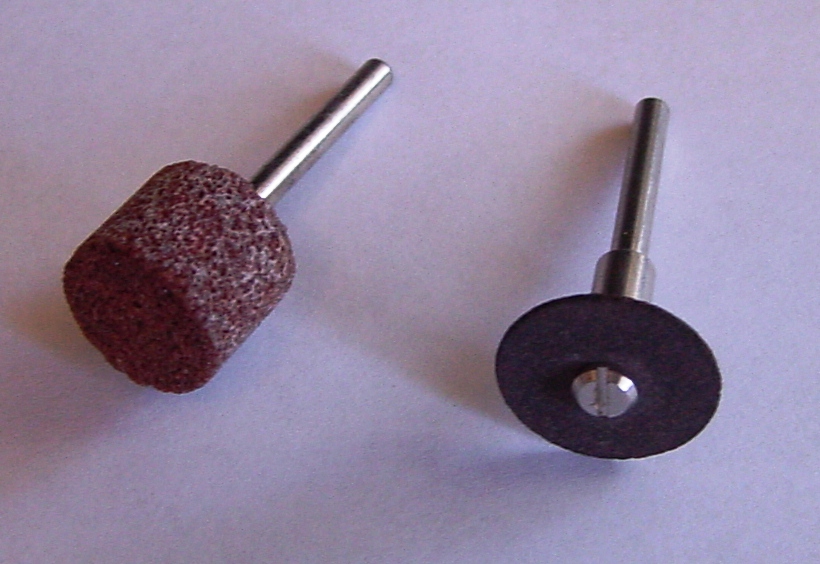


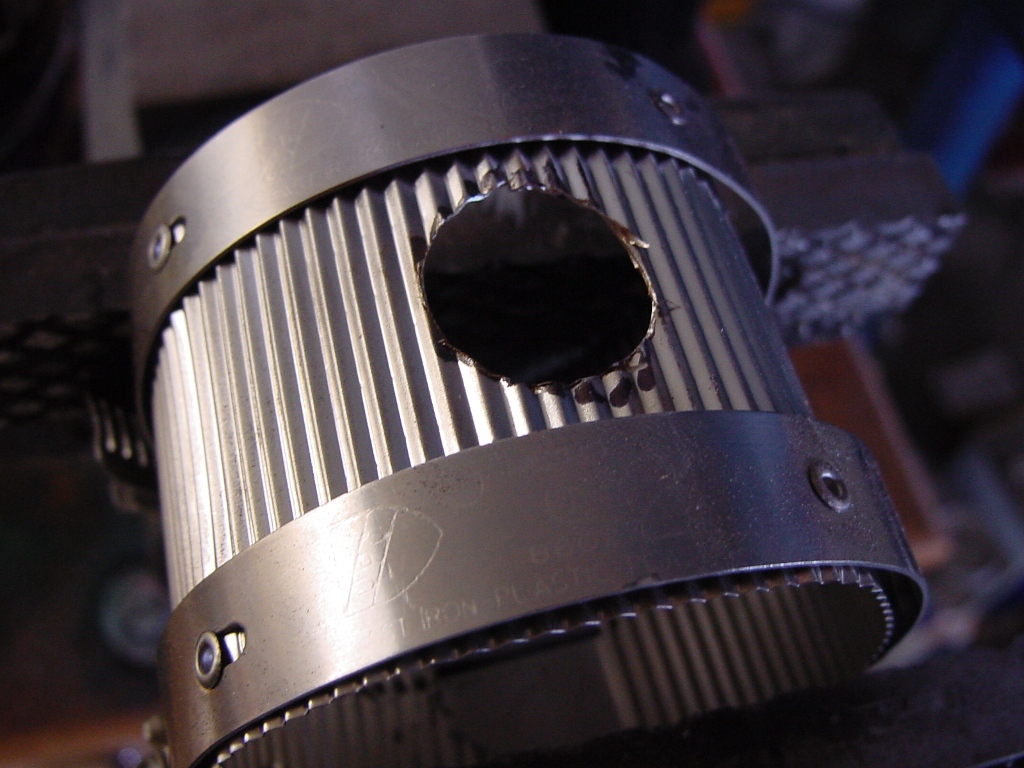

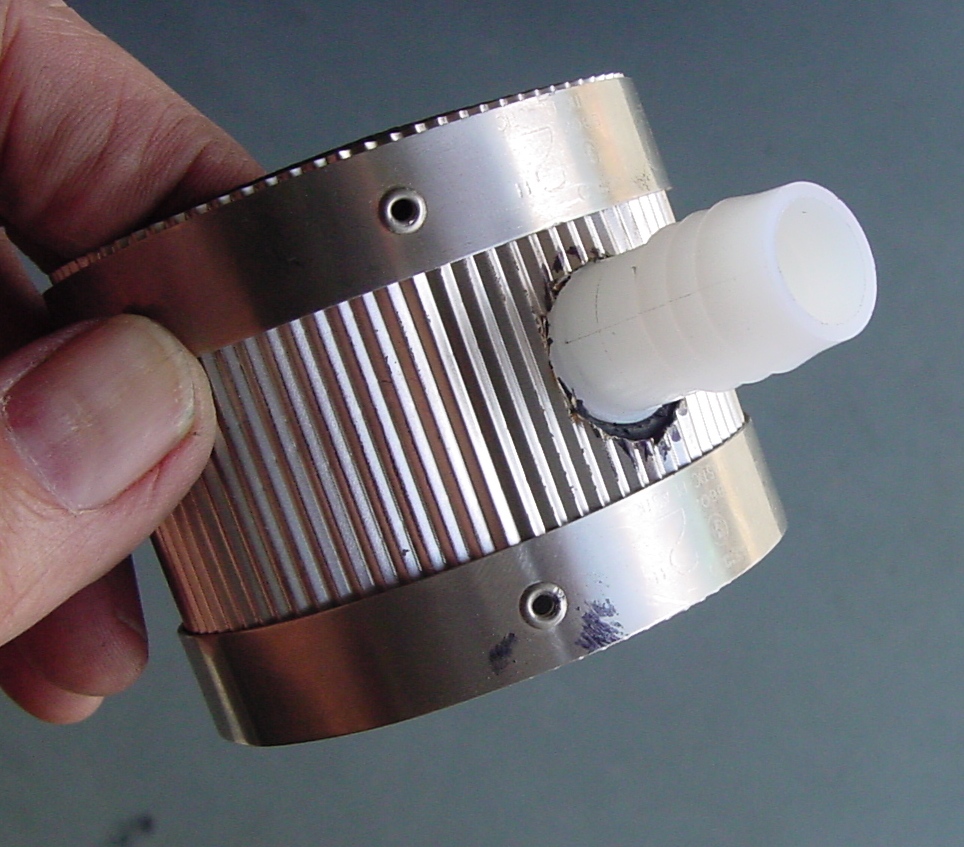
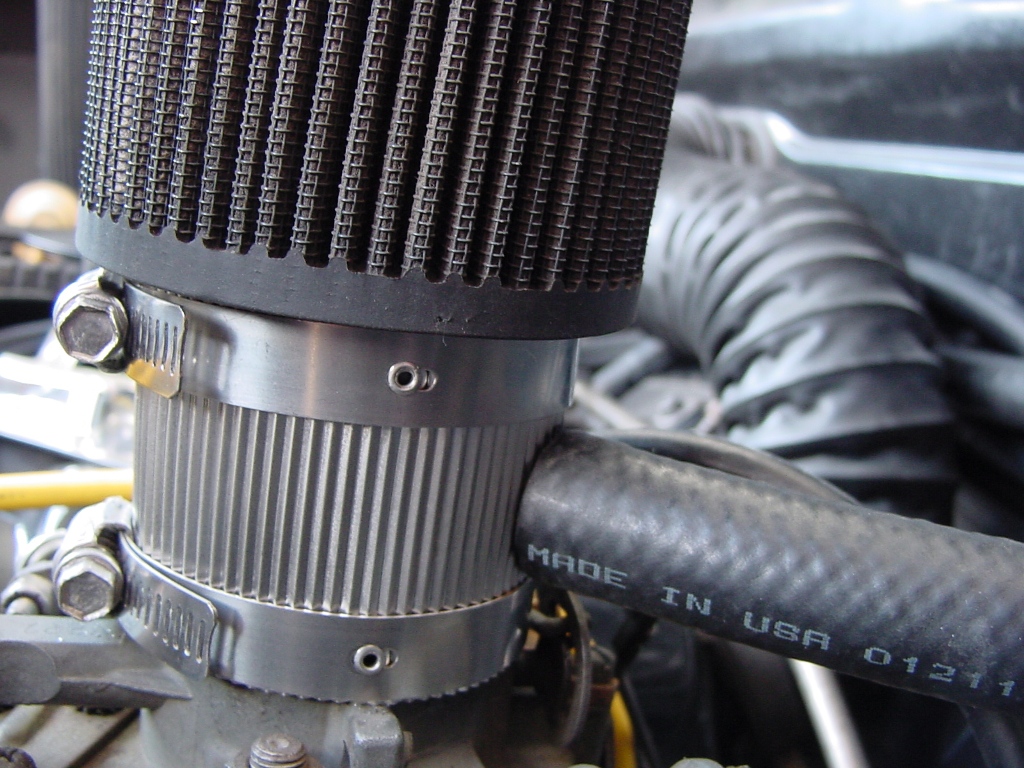

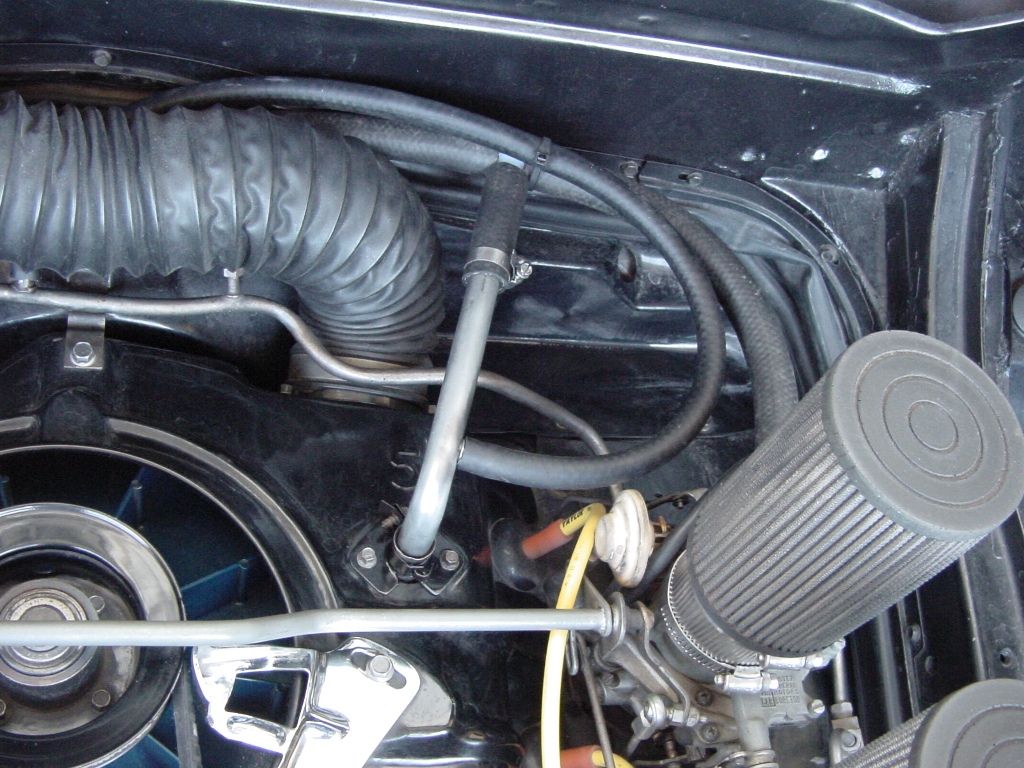
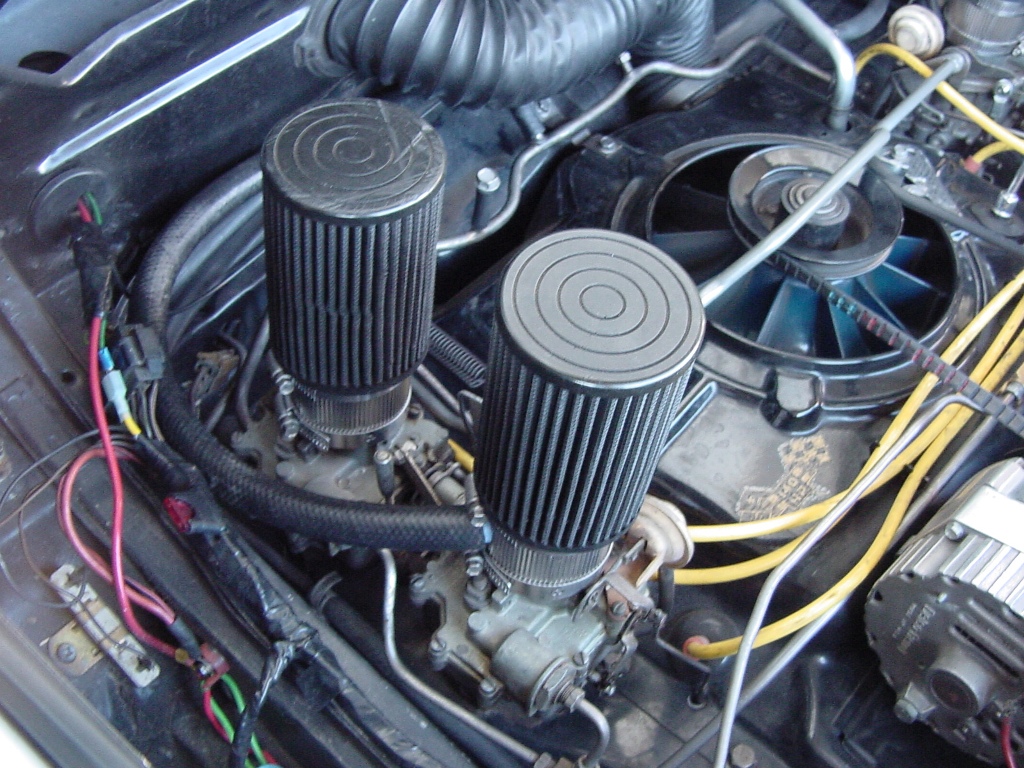
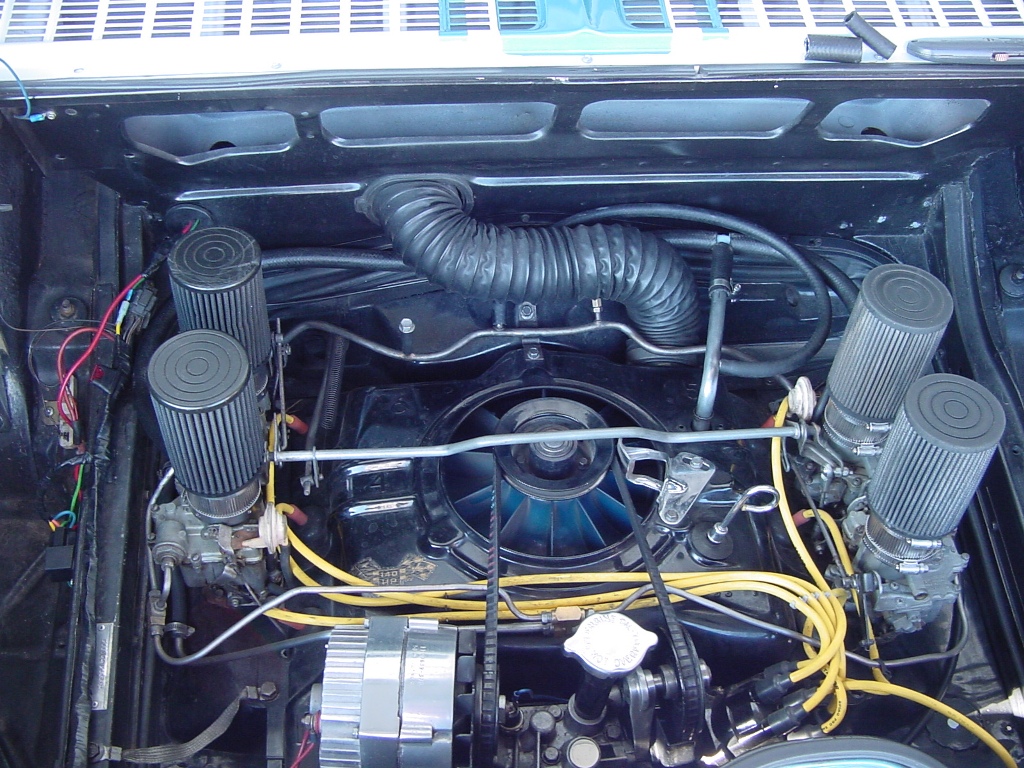

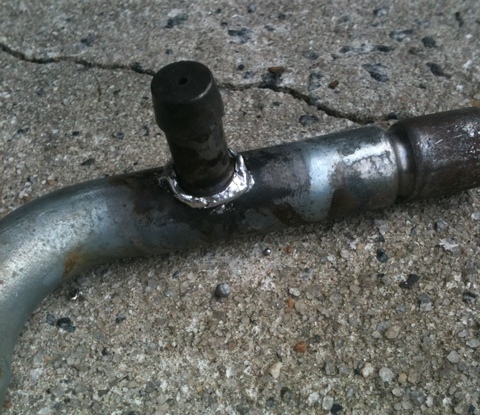

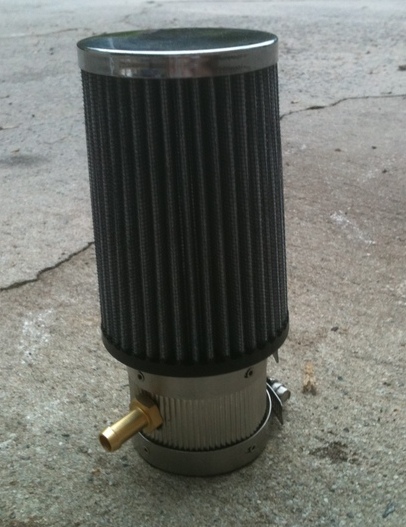

.JPG)
.JPG)